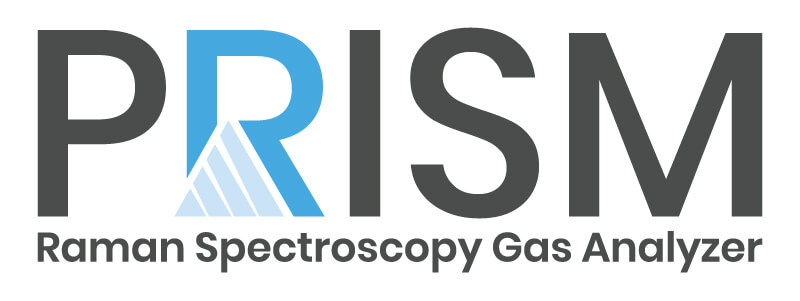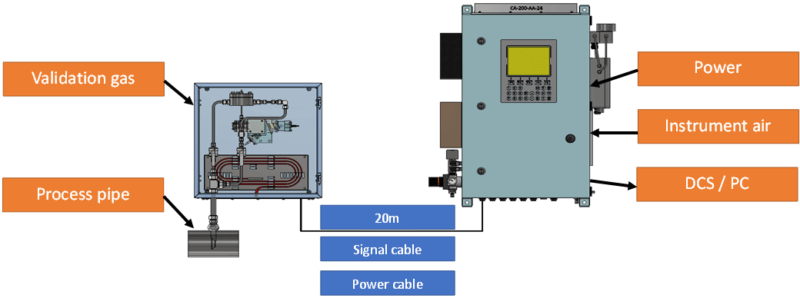Principle of Operation
The Hobré Raman can simultaneously measure C1..C5+, N2, H2, CO, CO2, H2O. Technologically wise, the Hobré Raman is a big step forward as it offers a combination of features not available in any other analyzer on the market, e.g.:
- High accuracy compositional analysis in 10 seconds,
- No moving parts,
- Full separation of detector and electronics,
- Wide concentration range,
- Zero-emission design,
- Lowest lag time and nearly zero dead volume,
- Suitable for high pressure application, without the need for pressure reduction,
- Close to zero maintenance and low spare component costs,
- Only power and purge air are required,
- Hydrogen measurement as a standard (0-100% range) makes it “future proof”,
- Output of physical properties like heating value, Wobbe Index, density, specific gravity, heat ratio Cp/Cv, compressibility, air demand.
“Fast responding and zero emission gas composition analysis for feed forward control.”
Technology
The analysis is based on the Raman measurement principle and named after its discoverer, the physicist C.V. Raman. Raman spectroscopy is
a nondestructive, fast responding measurement principle that provides chemical information on the sample being analyzed. This technique allows users to obtain (near) real time information on the composition as well as physical properties which can be used to optimize efficiency based on a feed forward control loop.
Light interacts with materials in different ways (transmitting, reflecting or scattering). Raman looks at scattered light. A continuous wave type laser is focused into a measuring cell through a spherical lens.The scattered light is detected by a spectrometer. Most of the light that scatters remain unchanged in energy (Rayleigh Scattered). A small fraction of the scattered light will lose or gain energy. This fraction is referred to as Raman scattering.
The change in energy depends on the vibration frequency of the molecule. Light atoms have strong bonds and a high frequency, resulting in a significant change in energy. Heavy elements (low frequency, weak bonds) show a small change in energy. The energy difference between
the two states is unique and can be used for both identification of an element and quantitative analysis.
Installation
The Raman analyzer operates on process pressure. This simplifies the installation and offers the following advantages.
1. No need to reduce the pressure (which would require heated regulators).
2. Sample is returned to process, eliminating the need for large fast loop flows and venting to atmosphere or flare.
3. The probe design allows for the shortest possible lag time and a nearly zero dead volume.
Hobré offers the Raman analyzer in combination with the HIFISC sample technology. The differential pressure over the probe tip of the HIFISC probe, drives a fast loop over a multiphobic filter element. A small amount of sample is guided through the measuring cell for analysis. The complete sample flow is returned to process. The HIFISC includes the Hobré HPFF membrane filter.
Certificates






